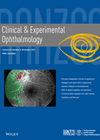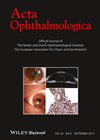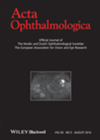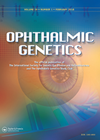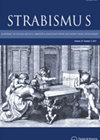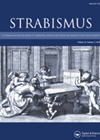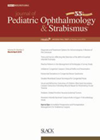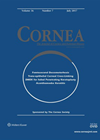You searched for "dystrophy"
Genetic analysis of choroideremia families
1 February 2016
| Anjali Gupta
|
EYE - Vitreo-Retinal
Choroideremia (CHM) is a rare X linked recessive chorioretinal dystrophy. Symptoms include nyctalopia and progressive peripheral field loss. Female carriers may have mild symptoms. Choroideremia is known to be caused by a mutation in the CHM gene. A multicentre human...
Climatic droplet keratopathy
1 December 2015
| Bheemanagouda Patil
|
EYE - Cornea, EYE - General
|
UV-B, ascorbate, environment, human, keratopathy
Climatic droplet keratopathy (CDK) is an acquired and potentially handicapping corneal degenerative disease that is highly prevalent in certain rural communities around the world. It predominantly affects males in their 40’s and is known by many other names such as...
Descemetorhexis without endothelial keratoplasty
This retrospective study examined outcomes of the largest reported series of eyes, which underwent Descemetorhexis without endothelial keratoplasty (DWEK) for Fuch’s endothelial dystrophy with mean 10 months of follow-up. Seventeen eyes were included in analysis; with 82.4% achieving corneal clearance...Nystagmus and associated diagnosis
Patients with nystagmus attending a Low Vision clinic in Sweden were included in this study. Medical records were reviewed to exclude those with general diagnoses that could explain the nystagmus. The remaining group of patients underwent subjective refraction, retinoscopy, ocular...Resolution of mid-peripheral schisis in x-linked retinoschisis with the use of dorzolamide
1 October 2014
| Huw Edward Oliphant
|
EYE - Vitreo-Retinal
X-linked retinoschisis (XLRS) is an early onset hereditary retinal dystrophy. It is caused by mutations of the RS1 gene. Common manifestations of XLRS are schitic lesions at the macula, as well as infero-temporal schisis. Carbonic anhydrase inhibitors have previously been...
Long-term outcomes of surgery for vertical head posture
The authors report long-term follow-up of a series of seven patients with nystagmus and chin up or chin down head posture that underwent vertical extraocular muscle (EOM) surgery. Mean age at surgery was 56 months (19-96 months). All had horizontal...Predictors for developing strabismus after paediatric cataract surgery
This study investigates the predictors for strabismus development in patients with paediatric cataract and their final visual acuity. The aim was to improve the treatment of both deprivation and strabismic amblyopia after surgery. The study included 46 children; 21 male,...Prevalence of visual function impairment in congenital ptosis
This study sought to evaluate the prevalence of visual function loss in the setting of congenital ptosis. This was a retrospective study of 155 eyes of 134 patients; 72 males and 62 females. Mean age at diagnosis was 7.8 ±5.8...An update on inherited retinal disorders (part 1) – overview and assessment of inherited retinal disease
1 October 2016
| Michel Michaelides (Prof)
|
EYE - Vitreo-Retinal
Part 2 of this topic can be found here Inherited Retinal Disease (IRD) is the leading cause of blindness certification in the working age population (age 16-64 years) in England and Wales and the second most common in childhood [1]....
William’s Marathon Mission: Running for Sofie and Sight Scotland
William Oviatt is running the Edinburgh Marathon to raise money for Sight Scotland to say thank you for all the help and support the charity gave to his family when his daughter, Sofie, was diagnosed with retinal dystrophy.Leicester Eye Meeting 2023
8 December 2023
Chaired by Mr Usman Sarodia, this meeting is now in its 8th year and aims to bring together Ophthalmologists and Allied Healthcare Professionals for a day of education.

